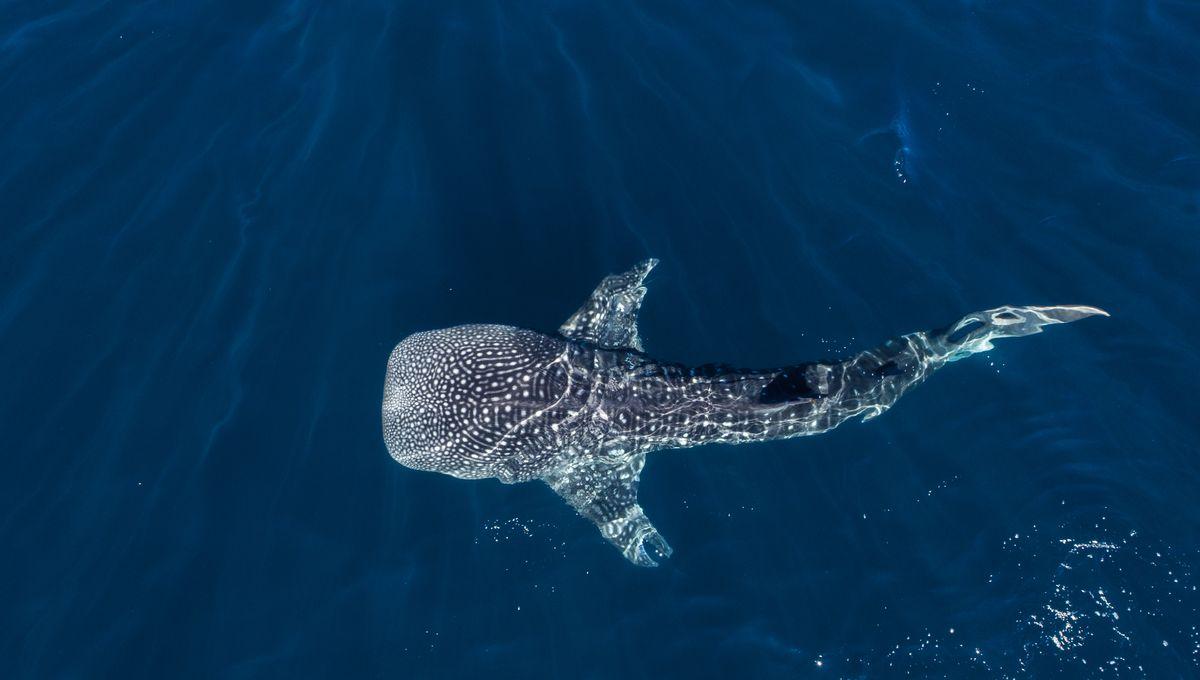-
Fil d’actualités
- EXPLORER
-
Pages
-
Blogs
-
Forums
Sharks Have No Bones, So How Do They Get So Big?

Sharks Have No Bones, So How Do They Get So Big?
At up to 18 meters (60 feet) long, the whale shark is the largest fish in the ocean. That’s quite a size, especially considering that it, along with all other sharks, has no bones. So, how do these behemoths get so big?
Instead of bone, shark skeletons are made up of cartilage – the same soft tissue that’s found in our nose and ears. As humans, we typically have 206 bones in our bodies (babies have almost 100 more, btw) – sharks, on the other hand, have between 200 and 400 cartilaginous structures. Some of this cartilage – for example, around their jaws, spinal column, and brain – is fortified by calcium salts, making these body parts stronger and harder. The only part not made of cartilage is a shark’s teeth – hence why it tends to be just their gnashers found in the fossil record. Cartilage is surprisingly strong, but it’s also more flexible and about half as dense as bone, meaning it's ideal for an animal that spends all its time swimming, as it helps keep sharks buoyant – they also have livers filled with low-density oils to help with this. In addition, “its higher water content allows it to withstand physical forces differently,” Yale University’s Dr Joshua Moyer told A-Z Animals. “That’s why many terrestrial vertebrates use cartilage as shock absorbers in joints.” As well as its robustness and buoyancy, cartilage can help boost a shark’s speed. “We think early sharks developed a cartilaginous skeleton because it better suited their lifestyle,” explained the Natural History Museum, London’s Fossil Fish Curator Emma Bernard. “Being light and more flexible than bone, cartilage means sharks can typically swim faster than bony fish.” And none of these benefits come at the cost of a powerful bite. Sharks’ upper jaws are not fused to their cartilaginous skulls, which means they can open extremely wide and chomp their teeth down with impressive force. However, it hasn’t always been this way: “It’s thought that sharks’ ancestors likely had a bony skeleton,” Bernard added, “but sharks and other cartilaginous fishes, such as rays and skates, reverted back to cartilage because it’s lighter and more flexible than bone. This offered advantages including escaping predators and being able to turn more quickly in the water in pursuit of prey.” Despite not having bones, sharks can grow pretty large. There’s the aforementioned whale shark, roughly the size of a bowling lane, but let's not forget the basking shark, also something of a colossus at up to 12 meters (40 feet) long, or the iconic great white, which measures in at a sizeable 6 meters (20 feet). The secret to their substantial size? Turns out cartilage might be a help and not a hindrance in this area. By helping sharks to swim faster and more adeptly catch their prey, it means they’re better able to access the food they need to grow big and strong. In a 2015 study, researchers studying the swimming strategy and body plan of the whale shark identified several ways in which the fish save energy and improve foraging efficiency. Whale sharks are negatively buoyant, which means they are denser than the water around them. This allows them to sink down to deeper water to access their food without using much energy. The energy this conserves can instead be funneled into keeping them warmer for longer, extending the length of time they can spend foraging. “We estimate that this behaviour, followed by a steep return to the warmer surface waters, allows them to conserve up to 30 percent of the energy they would use up just swimming horizontally,” study author Mark Meekan told ScienceAlert at the time. They also have white muscle insulating their critical organs, which further helps to keep them warm. “Because of this, we think they have evolved to become bigger and bigger,” Meekan added. Still, some experts think that the whale shark’s cartilaginous skeleton may limit its size, preventing it from reaching the vast proportions of the blue whale – the heaviest animal to have ever lived. Speaking of stupidly oversized sharks, JAWS turns 50 today: learn all about the film’s impact and legacy for shark conservation in our exclusive feature.Sharks don’t have bones
Why are sharks so big?


